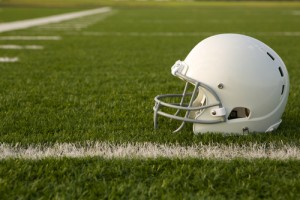
What is a concussion? A concussion, also known as a traumatic brain injury, is caused by a blow to the head that makes the head and brain move rapidly back and forth. The sudden movement causes the brain to bounce in the skull, which can damage brain cells and even create chemical changes. Although concussions are generally not life-threatening, the effects can be serious, causing memory loss, headaches, blurry vision, dizziness, along with other symptoms. Long-term effects of concussions could result in depression, dementia, or a disease called chronic traumatic encephalopathy. This is especially evident in football players who have been repeatedly hit in the head.
A recent Newsday investigation into Long Island high school football programs had found that using a rating system created by Virginia Tech researchers, 885 football helmets in these high schools were classified as “low performers” in reducing the risk of concussions. In addition, Newsday reported that there were a total of 364 concussions that occurred during practices or games last season in Long Island.
According to Virginia Tech research, although no helmet can fully prevent a concussion, the higher ranked a helmet is, the more likely the student athlete’s chances of sustaining a concussion are reduced. One researcher has stated that by moving from a one-star helmet to a five-star helmet, the chances of a concussions fall by 50 percent.
If a student-athlete does suffer a concussion, the Centers for Disease Control and Prevention offers a five-step program for athletes to follow to return to play. These steps are meant to be taken gradually with approval from your health care provider.
Once the athlete has returned to school and is no longer experiencing symptoms:
- Begin with a light aerobic activity, just to increase the heart rate. No weight lifting just yet.
- Increase activity with body or head movement, such as modern-intensity stationary biking or weightlifting.
- Start to add heavy, non-contact activity like sprinting or regular sports-specific drills that don’t involve contact.
- The athlete can return to the team practice and full contact with other players.
- The athlete can once again return to competition.
If you are in need of legal assistance, contact the Law Offices of Anthony Carbone today for a free consultation.